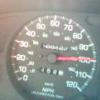-
Posts
478 -
Joined
-
Last visited
Content Type
Profiles
Forums
Calendar
Posts posted by 90seven
-
-
Its funny how the bushings just disintegrates the way they do. I didn't even have a recognizable piece to compare the new bushing with. I notice that when I change my oil it dribbles on/near the bushing. Probably why the driver side is the issue over the passenger. Mine were the same. One good, one bad.
(I hope that since shoesandsocks solved his issue, its okay to hijack the thread.)
-
Good to hear you solved the problem.
Before I changed the bushings on the rack and pinion, I noticed that everytime I made a hard left turn, my steering wheel wouldn't align correctly(cocked to the left a little), but it would still drive straight. Only when I made a hard right would it align the right way.
-
-
Just realized I can't even spell axle right.
-
That's the problem I was facing. If I did place the stands on the axle I wouldn't be able to lower the axel enough to remove the coils. Or was there another way to do this?
I ended up just placing two stands under the receiver and then lowering the axle.
The struts were such a pain. I don't think I want the spacers anymore.
-
Is the receiver strong enough?
-
-
Which fasteners 3/8" or 1/2" and did you also get the lower strut brackets from NX4?
-
I wanted your rear bumper with the tire carrier.
 Any blueprints from it if not parting it?
Any blueprints from it if not parting it? -
After years with this vehicle its hard to find anything cheap that's made specifically for the R50. Anything you want for it is usually exclusive to one manufacture (Jim Wolfe Technology, Stillen) or its been custom made, both of which cost a grip.
I so happen to own two of Nissan's most neglected models in the aftermarket scene. The R50 and the Altima L30.
-
 1
1
-
-
Intake gasket leak?
-
Have you tried unplugging some sensors? Could probably have a bad sensor. Anyone ever heard of sensors NOT tripping the SES/CEL?
I'm not sure of the piece but I'll take a pic of the location of my leak. It was under the hood, so the smell of gasoline was significant which made it easy to pinpoint.
-
Generic OBD II "Drive Cycle"
Most OBD II ("On-Board Diagnostics II") diagnostic monitors will run at some time during normal operation of the vehicle.
However, to satisy all of the different Trip enable criteria and run all of the OBD II diagnostic monitors, the vehicle must be driven under a variety of conditions. The following drive cycle will (theoretically) allow all monitors to run on (??) vehicle. (Note: Drive cycle specifics vary by vehicle!)
Ensure that the fuel tank is between 1/4 and 3/4 full.
Start cold (below 86°F /30°C) and warm up until engine coolant temperature is at least 160° F (typically requires at least one minute; up to 3 minutes).
Accelerate to 40-55 MPH at 25% throttle and maintain speed for five minutes.
Decelerate without using the brake (coast down) to 20 MPH or less, then stop the vehicle. Allow the engine to idle for 10 seconds, turn the key off, and wait one minute.
Restart and accelerate to 40-55 MPH at 25% throttle and maintain speed for two minutes.
Decelerate with using the brake [or the clutch!] by coasting down to 20 MPH or less, then stop the vehicle.
Allow the engine to idle for 10 seconds, turn the key off, and wait one minute.
-
 1
1
-
-
To reset:
Step 1 of 9
Open the driver's side door and get into the drivers seat.
Step 2 of 9
Insert the key into the ignition and turn it a quarter turn so the ignition turns on, but the engine doesn't start.
Step 3 of 9
Step on the gas pedal and quickly release it. Do this 5 times in less than 5 seconds. When you step on the pedal, press it down as far as it can go.
Step 4 of 9
Wait 10 seconds.
Step 5 of 9
Press the gas pedal completely down with your foot and hold it there for 10 seconds, or until the SES light blinks on and off.
Step 6 of 9
Step on the gas pedal and hold it down completely for another 10 seconds and then release it.
Step 7 of 9
Turn the ignition key to the off position.
Step 8 of 9
Wait 3 minutes for the ECU to automatically reset.
Step 9 of 9
Start your engine. This will reset the SES light.
-
To clear the codes you can simply disconnect the battery for a few minutes to do so. Afterwards you can force the system to cycle vs driving the lengthy set of miles in some cases. I'm sure you can find somewhere on here with instructions to force a cycle.
-
I'll let you know where I head South next month.

-
Cooper Discoverer AT3
-
Have you searched for a gas leak? Seems silly, but I found a leak on mine.
-
Can we PIN this?
-
I just had a set installed on my Pathy this past Thursday. I felt a big difference. Anyone else experiencing a tighter turning circle or is it just me?
-
Don't forget center bore, at least 108mm..

-
I was at Autozone and there was a person looking for cans of brake cleaner to clean his driveway. I have never tried this, but it wouldn't hurt.
-
Does it come with the kit?
-
265/70R15 is the stock tires on an SE.That's ~30.3in. if I remember.



Help! A/C Lift Kit or SFD
in 96-2004 R50 Pathfinders
Posted
If you have to time, money, and help, SFD, easy.